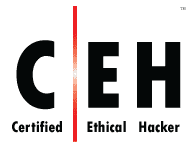ENSURE THAT YOUR SECURITY CONTROLS ARE FUNCTIONING!
Whether you need to show compliance with regulations to satisfy a petition from senior management, or exhibit security maturity to your clients, a penetration test is a good mechanism to achieve your goals. The corporate computing environment poses many challenges and security risks such as: security incidents, hacks, information theft, denial of service and more. All of these will severely damage the organization’s current activities and may cause it to lose significant revenue, abandon customers and damage its reputation.
Most organizations are targets for cyber attacks and hacks, to ensure that the protection of the organization’s critical information/assets is adequate, a quality level of penetration testing is needed. Penetration testing is the practice of examining computer systems, corporate networks, and Internet applications to find vulnerabilities that attackers can exploit. The information assets located in a company’s network should be tested on a regular basis using real and realistic scenarios that mimic the actions of an external and internal attacker.
The number of entry points to corporate networks is always increasing due to the widespread use of emerging technologies. Therefore, those who will try to damage the organization’s sensitive information, duplicate it, disrupt or destroy it, will usually look for the easy and convenient way, the open loophole in the IT network, the most vulnerable, weak and hackable area.
Our Pen testers team expert’s will check and rate the vulnerabilities, so at the end of the process The organization will be able to plan a strategy and implement it according to its risk and budget.
CONTACT US
90% of the businesses who gets hacked
will never be able to recover
Dont Be Next!
GET A QUOTE
PENETRATION TESTING SERVICES
Penetration testing, aka “moral hacking,” is a protocol to estimate the security of your entire network foundation, such as users, networks applications and computer systems.
it simulates an attack from wicked foreign(unauthorized) and/or malicious insiders (authorized) to recognize an attack, weak spots and control vulnerability. It applies a diverse of techniques used to utilize known and unknown Weaknesses.
Our security attack experts identify specific vulnerabilities in an organization’s security activity. By safely attempting to discover the vulnerabilities , we find the “holes” in your system before damage happens.
- Testing the programming of certain attacks.
- Assembling a strong attack from several weak fronts
- Identification of weaknesses that will not be revealed by automatic tools such as :(app/infrastructure weakness scanner)
- Identifying the magnitude of the business and operative damage that will be caused by the attacks.
- Testing the capabilities of the defense system of the system intended for attack in terms of detecting attacks and how to handle them.
- Providing evidence to improve the human and technological security system.
- Cloud security
- Social engineering (people)
- Database
- Applications
- Red teams
- Networks
- Wireless local area network
- Physical security
- and more…
- Corporate information is better protected: a vulnerability assessment service “anticipates a blow” and reduces the chance of financial damages, loss of income, customer abandonment and damage to reputation.
- Reducing exposure time to existing vulnerabilities.
- Service as a result of frequent changes in the IT system, which come to support the business processes of the organization while at the same time, the strictness of the information security procedures is neglected.
- Frequent performance of penetration tests significantly improves the organization’s security level and reduces its exposure to security failures resulting from vulnerabilities that are not addressed in time.
Application penetration testing is a systemic process of distinguishing application security. During the process, an intrusion is made into the application in order to identify and exploit security weaknesses, to take action and to conduct system vulnerabilities. The main goal is to identify the possible vulnerabilities and provide recommendations to increase security.
The penetration test will focus on:
- Bypassing the authentication steps – we will check using different methods if there are ways to bypass the authentication step and if it is possible to bypass the MFA (if any).
- Access control – we will make sure that every parameter that is available to the user will not allow access to additional services. We will also make sure that users do not have access to places that require higher privileges.
- Disabling an application – we will make sure that the application works properly even when it receives a large amount of requests by using a fuzzing tool, and we will make sure that an attacker cannot do a reset or lock accounts.
- User authentication – we will check that it is not possible to do a “brute force attack” and that we will enforce a ban on the use of special characters that allow the injection of malicious code.
- Verification of the connection management – we will make sure that the session token is limited to a limited period of time, and of a length that does not allow guesswork, and that it is canceled after its use.
- Error handling – we will make sure that there are no error messages that allow attackers to gain knowledge about the application and other users.
- Information protection and information transfer – we will check that there is no sensitive information in the html that might help the attacker, and that the information is protected where necessary so as not to allow access to those who do not have the appropriate privileges, we will also check the leakage of sensitive information to the dark web.
- Management configuration – we will make sure that the application does not support the ability to manipulate resources from the Internet, that the server versions are not accessible to the user, and whether there are secret directories that can be accessed by normal users.
- Input verification – we will make sure that it is possible to inject malicious code into the sql server and that the system is not vulnerable to an xss attack.
Infrastructure penetration testing is a process in which an external attack is carried out on an organization’s infrastructure system to identify security weaknesses and find potential intrusion possibilities. In principle, an infrastructural penetration test can be performed on computer networks, servers, infrastructure components such as network devices (routers, switches), communication equipment, etc.
During the test, the security team tries to bypass the existing defenses and identify weak points in the computing infrastructure. The test is inclusive:
- Network scans – checking if there are open ports that shouldn’t be, and checking for vulnerable end computers
- Analysis of the communication – does the communication pass in a secure manner that does not allow the attacker to obtain essential information from it
- Search for weaknesses in operating systems and servers – search for vulnerable versions of the types of software running on the computers and servers, and check for known weaknesses in vulnerable computers
- Checking email attacks – phishing
- DDoS attacks – we will check if there are any capabilities to carry out attacks that will disable essential servers
- Checking the configuration of the Active directory – we will make sure that there is no possibility of escalating privileges and gaining access to the domain controller.
- Password strength – we will check whether the servers and users have strong and non-diplomatic passwords, whether there is access to places without a password, whether it is possible to hack the hash of the passwords.
The purpose of the test is to identify the weaknesses in the computing infrastructure and provide a set of recommendations to improve security. According to the findings, it is possible to fix weaknesses, upgrade protections or replace components that are not secure.
3 methods of Penetration testing
Penetration testing, also known as ethical hacking, is an essential cybersecurity practice that aims to identify system vulnerabilities before malicious hackers can exploit them. Three common approaches to penetration testing are White Box, Black Box and Gray Box testing. Each method offers distinct advantages and is tailored to different security assessment needs.
White Box, Black Box, and Gray Box penetration testing methods each play a vital role in assessing and improving an organization’s cybersecurity posture. The choice between these approaches depends on factors such as the level of access to the target system, the desired scope of the assessment and the specific goals of the security testing initiative. A well-rounded cybersecurity strategy often incorporates a combination of these techniques to comprehensively identify and address vulnerabilities, ultimately improving overall system security.
White box testing, also called clear box testing or transparent testing, includes comprehensive knowledge of the internal architecture of the target system and the source code. This is similar to the system drawing approach. Key features of White Box testing include:
- Full disclosure – testers have access to detailed information about the target system, including source code, network diagrams, and configuration settings.
- In-depth analysis – testers can perform a thorough examination of the design and logic of the system, and identify weak points from the ground up.
- Realistic simulation – White box testing often simulates how a knowledgeable insider or attacker might exploit vulnerabilities.
White Box testing is ideal for assessing the security of critical applications or systems where in-depth analysis is essential to comprehensively mitigate risks.
Black-box testing, also known as closed-box testing, simulates the attacker’s point of view without prior knowledge of the internals of the target system. Testers approach it as if they have no inside information, relying on external observations and behaviors. The main features of Black Box testing include:
- No prior knowledge – Testers start with minimal or no knowledge of the target system, similar to how an external attacker would access it.
- Realistic assessment – It provides an unbiased view of the system’s security status, as testers rely solely on what they can discover from the outside.
- Limited scope – Black box testing often focuses on functionality or specific aspects of a system rather than the entire architecture.
Black Box testing is useful for assessing a system’s resilience against external threats and simulating real-world scenarios that organizations may face.
Gray Box testing is a hybrid approach that combines elements of White Box and Black Box testing. In Gray Box testing, testers have partial knowledge of the target system. They have some information about its architecture or access credentials, but they may not have full access to the source code. Key features of Gray Box testing include:
- Partial knowledge – testers have limited information about the system, creating a balance between white box and black box approaches.
- Targeted assessment – Gray box testing allows for targeted assessments of specific areas while maintaining a degree of realism.
- Risk Mitigation – This is especially useful for organizations looking to identify critical vulnerabilities without exposing sensitive internal details.
Gray Box testing offers a middle ground, making it suitable for scenarios where White Box analysis is not possible, but a completely blind Black Box approach is insufficient.
OUR CERTIFICATIONS








COMMON Q&A ABOUT PENETRATION TEST
Understanding the 5 Stages of Penetration Testing
Penetration testing typically encompasses the following stages:
Planning and Preparation: This phase involves defining the scope, objectives, and methodologies of the penetration test. It also includes obtaining necessary approvals and permissions from stakeholders.
Information Gathering: Penetration testers collect relevant information about the target environment, including network architecture, system configurations, and potential entry points for exploitation.
Enumeration and Vulnerability Analysis: Testers enumerate network services and systems to identify potential vulnerabilities. They leverage various techniques and tools to analyze weaknesses and assess their exploitability.
Exploitation: In this stage, testers attempt to exploit identified vulnerabilities to gain unauthorized access or escalate privileges within the target environment. The goal is to simulate real-world cyber attacks and assess the effectiveness of existing security controls.
Reporting and Remediation: Finally, testers compile a comprehensive report detailing their findings, including identified vulnerabilities, exploitation techniques, and recommendations for remediation. This stage emphasizes collaboration with stakeholders to address security gaps and enhance overall resilience.
Is Penetration Testing a QA?
While penetration testing shares some similarities with quality assurance (QA) processes, it serves a distinct purpose in assessing and enhancing cybersecurity posture. Unlike QA, which focuses on ensuring the functionality and reliability of software and systems, penetration testing specifically targets security vulnerabilities and evaluates the effectiveness of defensive measures.
How is Penetration Testing Done?
Penetration testing is conducted through a systematic and methodical approach, involving:
- Manual Testing: Skilled penetration testers leverage manual techniques to identify vulnerabilities and exploit weaknesses that automated tools may overlook.
- Automated Tools: Various specialized tools and frameworks, such as Metasploit, Nessus, and Nmap, are employed to automate certain aspects of the testing process and streamline vulnerability identification.
Exploring Tools Used for Penetration Testing
Common tools utilized in penetration testing include:
- Nmap: A powerful network scanning tool used for host discovery, service enumeration, and vulnerability detection.
- Metasploit: An open-source framework that facilitates the development and execution of exploit code against target systems.
- Burp Suite: A comprehensive web application security testing tool used for scanning, crawling, and exploiting web vulnerabilities.
- Wireshark: A network protocol analyzer that captures and analyzes network traffic for security assessment and troubleshooting purposes.
The 7 Stages of Penetration Testing Revisited
Penetration testing can also be categorized into seven stages:
- Reconnaissance: Gathering information about the target environment.
- Scanning: Identifying live hosts, open ports, and services.
- Enumeration: Extracting additional information about identified services and systems.
- Vulnerability Analysis: Assessing the security posture and identifying potential vulnerabilities.
- Exploitation: Attempting to exploit identified vulnerabilities to gain unauthorized access.
- Post-Exploitation: Establishing persistence and further compromising the target environment.
- Reporting: Documenting findings, recommendations, and remediation steps.
IS YOUR BUSINESS REALLY NEED A PENETRATION TEST?
There is another type of technical security testing which often tends to be confused with penetration testing namely : “Vulnerability assessments.”
Yet they couldn’t be more different, the financial costs the information obtained and the effort that required.
You should make sure which one you need, if you’re uncertain about your assessment needs, contact us!
GET CYBERSAFE EXPERTS ON YOUR SIDE
CyberSafe Security is a leader in Penetration Testing and Vulnerability Assessment.
We’ve been providing advanced security testing services since 2003; testing hundreds of companies
to validate and confirm that their business-critical objectives and information are safe.
As an industry leader, we are committed to maintaining the highest levels of training and certifications for all our security testing experts
. Our penetration tests use both automated tools developed in-house, as well as well-known industry tools.

